"איפה שיש אנשים יש זבובים": חרקים, אנשים ושאלת האתנוגרפיה הרב-מינית – המקרה של החקלאות בערבה
לירון שני
בשנים האחרונות אנו עדים לפריחה של מחקר על היחסים בין אדם לחיה – מחקר אשר קורא תיגר על הגבולות של מה שנחשב עד כה ל"חברתי". ואולם השאלה אם ניתן לערוך אתנוגרפיה של האנושי והלא אנושי נותרה ללא מענה מספק. מאמר זה, המתמקד בזבובים ובחרקים, אשר אינם נוכחים בדרך כלל במחקרים על האנושי והלא אנושי, מציע מבט אחר על יחסי אדם–חיה.
הערבה הצפונית, אזור מדברי שבו פעילות חקלאית נרחבת, היא מהאזורים המובילים כיום בשימוש בהדברה ביולוגית: שימוש בחרקים אשר נוצרו וגודלו בידי בני אדם לצורך חיסול חרקים מזיקים בחקלאות. המאמר מתמקד בזבוב הים התיכון – מין פולש הנחשב לחרק מזיק אשר מסכן את ייצוא התוצרת החקלאית – ובחרקים נוספים המשמשים להדברה הביולוגית.
בהתבסס על מחקר אתנוגרפי באזור הערבה הצפונית, שנמשך שש שנים, המאמר מראה כיצד גבולות ההפרדה בין האנושי והלא אנושי ובין הטבע לתרבות הם מרחבים דינמיים אשר משתנים ומתעצבים בעקבות לחצים ושינויים פוליטיים וכלכליים. ואולם למרות השינוי ביחסים בין האדם לבין זבובים וחרקים אחרים בערבה ועיצוב מחדש של הגבולות ביניהם, נשמרת ההפרדה הבסיסית בין האנושי והלא אנושי ובין הטבע לתרבות. המאמר מאתגר את התיאוריות האחרונות במחקר על יחסי אדם–חיה ותוהה על היכולת לערוך אתנוגרפיה של האנושי והלא אנושי. בניגוד לתפיסה הרווחת בספרות על האנושי והלא אנושי, אשר מתיימרת למתוח את הסוכנות החברתית גם אל הלא אנושי, המאמר מתמקד בפעילות האדם עצמו אשר יוצרת את המרקם החברתי עם הלא אנושי. למרות זאת, המאמר מראה כיצד הבנת קשרי הגומלין בין האנושי והלא אנושי הכרחית להבנת מגוון תהליכים חברתיים.


